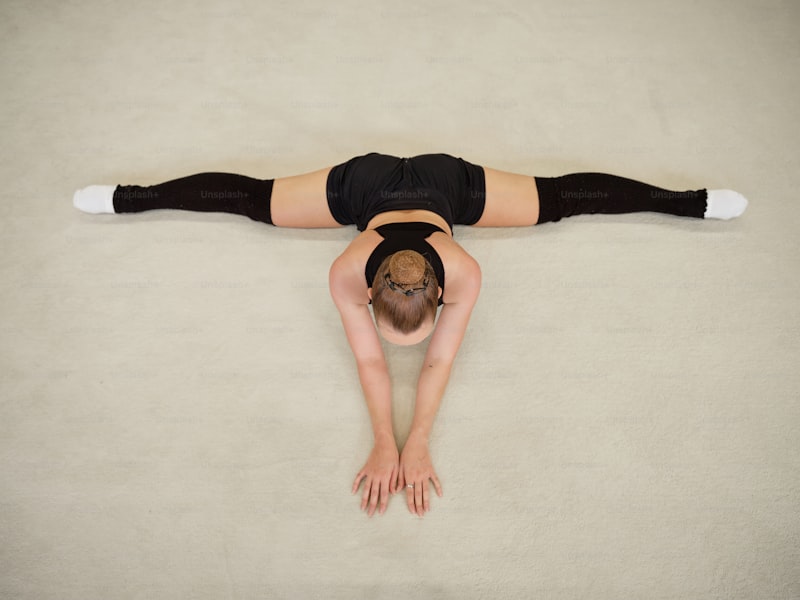Have you ever wondered how yoga affects your emotional well-being? The link between yoga and emotional stability runs deep, intertwining physical practice with mental resilience. Through its mindful poses and focused breathing techniques, yoga nurtures a sense of inner calm that extends beyond the mat.
Yoga serves as more than just a physical exercise; it’s a pathway to emotional balance. When you engage in yoga, whether through gentle stretches or challenging poses, your body releases tension stored in muscles. This physical release often parallels an emotional release, allowing suppressed feelings to surface and dissipate.
Moreover, the breathing exercises practiced in yoga, such as pranayama, promote mindfulness and relaxation. Deep, intentional breathing signals to the brain that it’s time to relax, triggering a cascade of calming neurotransmitters like serotonin and gamma-aminobutyric acid (GABA). These chemicals play crucial roles in regulating mood and reducing stress levels.
Incorporating yoga into your routine can also enhance emotional resilience. As you become more attuned to your body and breath, you develop a greater awareness of your emotions. This heightened self-awareness enables you to respond to challenging situations with clarity and composure, rather than reacting impulsively.
Metaphorically, practicing yoga can be likened to tending to a garden. Each pose and breath is like nurturing a plant—cultivating patience, strength, and stability within yourself. Just as a well-tended garden blooms vibrantly, regular yoga practice can cultivate emotional stability, allowing you to navigate life’s ups and downs with grace.
So, next time you roll out your yoga mat, consider not just the physical benefits but also the profound impact on your emotional well-being. Yoga isn’t merely about flexibility or strength; it’s about fostering a deeper connection between mind, body, and spirit—a connection that promotes lasting emotional stability.
Unlocking Inner Peace: How Yoga Enhances Emotional Stability
In today’s fast-paced world, where stress and anxiety seem to lurk around every corner, finding a way to center yourself becomes crucial. This is where yoga steps in as a gentle yet powerful tool. Through a combination of controlled breathing, meditation, and various postures (asanas), yoga helps cultivate a profound sense of inner peace.

One of the key benefits of yoga is its ability to enhance emotional stability. How does it achieve this? By fostering mindfulness. When you practice yoga, you learn to be fully present in the moment, letting go of worries about the past or future. This mindfulness practice trains your mind to observe emotions without being overwhelmed by them. As you breathe deeply and move through poses, you start to release tension stored in the body, which in turn has a calming effect on the mind.
Think of yoga as a sanctuary where you can retreat from the chaos of daily life. Each pose is like a metaphorical anchor, grounding you in the present moment. It’s not just about physical flexibility; it’s about flexibility of the mind. As you become more attuned to your body and breath, you begin to notice subtle shifts in your emotional landscape. You might find that you react less impulsively to stressful situations or that you’re better equipped to handle challenging emotions.
Moreover, yoga teaches us the art of acceptance and self-compassion. Instead of judging ourselves for how we feel, yoga encourages us to embrace our emotions with kindness and understanding. This practice of self-awareness and self-care is essential for building emotional resilience.
In essence, yoga is a journey inward—a journey toward unlocking inner peace and emotional stability. It’s about connecting mind, body, and spirit in a harmonious dance. Whether you’re a beginner or seasoned practitioner, the benefits of yoga extend far beyond the physical realm, offering a profound sense of well-being that radiates from the inside out. So, roll out your mat, take a deep breath, and embark on this transformative journey toward a calmer, more centered you.
Balancing the Mind: Yoga’s Impact on Emotional Well-being
Yoga isn’t just about striking poses; it’s a profound journey that harmonizes both body and mind. When we delve into the depths of yoga, we uncover its remarkable influence on emotional well-being. Imagine yoga as a sanctuary where stress melts away like morning mist under the sun’s warmth. Through gentle stretches and intentional breathing, yoga nurtures a serene inner landscape.
In today’s hectic world, emotional turbulence often feels like an unavoidable companion. Yoga offers a respite—a chance to recalibrate our emotional compass. Picture yourself on a yoga mat, gently flowing through poses that encourage mindfulness and introspection. Each movement is a step towards inner peace, guiding you to a state where worries dissipate, replaced by a sense of calm.
The magic lies in yoga’s ability to synchronize body and mind. As you stretch into a downward dog or settle into a lotus pose, your breath becomes a tether to the present moment. This mindful breathing isn’t just physical; it’s a bridge to emotional equilibrium. It teaches us to acknowledge our feelings without judgment, fostering resilience in the face of life’s challenges.
Moreover, yoga isn’t a quick fix but a transformative journey. Like a river sculpting its path through stone, regular practice gradually shapes our emotional landscape. It cultivates patience, allowing us to navigate storms with a steady heart. Picture your emotions as waves; yoga teaches us to surf them gracefully, finding stability amidst the ebb and flow.
In essence, yoga is more than exercise; it’s a holistic practice that enriches our emotional well-being. By integrating mindful movement with conscious breath, it empowers us to cultivate inner harmony. So, step onto your mat with an open heart. Let each pose be a testament to your resilience and each breath a reminder of your inner strength. Yoga’s impact on emotional well-being transcends words—it’s an experience that unfolds with each practice, nurturing balance within and without.
From Stress to Serenity: Yoga Techniques for Emotional Stability
One of the most effective techniques in yoga for achieving emotional stability is controlled breathing, also known as pranayama. By consciously regulating your breath, you can calm your mind and bring yourself back to center. It’s like finding a quiet oasis in the middle of a bustling city – a moment of peace amidst the noise.
Another key practice in yoga for emotional stability is mindfulness meditation. This involves focusing your attention on the present moment without judgment. It’s about observing your thoughts and feelings without getting caught up in them. Imagine being able to step back from your emotions and see them for what they are – temporary waves passing through you.
Yoga also emphasizes the importance of physical movement through asanas or yoga poses. Certain poses are specifically designed to release tension from the body and promote relaxation. For instance, the Child’s Pose gently stretches the back and calms the mind, while the Corpse Pose (Savasana) allows for complete relaxation and integration of the benefits of your practice.
Incorporating these yoga techniques into your daily routine can have profound effects on your emotional well-being. It’s not about instantly erasing stress, but rather building resilience and inner strength to navigate life’s challenges with greater ease. Yoga teaches us that serenity is not found by avoiding life’s turbulence, but by learning to ride the waves with grace.
Mindful Movement: Yoga Practices That Promote Emotional Resilience
In today’s fast-paced world, finding moments of calm and resilience is more important than ever. Yoga, with its blend of physical postures, breathwork, and mindfulness, offers a powerful antidote to stress and cultivates emotional resilience.
Imagine starting your day with a simple yoga routine. As you flow through gentle stretches and focus on deep, intentional breathing, you’re not just exercising your body but also training your mind to stay present. This mindful movement helps you build resilience by teaching you to observe your thoughts and feelings without judgment.

Yoga’s emphasis on balance and flexibility extends beyond the physical realm. Each pose, from the grounding mountain pose to the soothing child’s pose, encourages emotional stability. By practicing yoga regularly, individuals can enhance their ability to adapt to life’s challenges gracefully.
Consider the warrior pose, where strength and determination are embodied. As you hold the pose, feeling the stretch in your legs and the strength in your core, you’re metaphorically preparing yourself to face adversity with courage and resilience. This physical engagement translates into mental fortitude, helping practitioners navigate difficult emotions with greater ease.

Breathwork, another integral part of yoga, serves as a bridge between body and mind. The rhythmic inhales and exhales not only oxygenate your body but also calm the nervous system. This intentional breathing fosters emotional balance, reducing stress and promoting a sense of inner peace.
In essence, yoga isn’t just about striking poses; it’s about cultivating a mindset of resilience and self-awareness. By integrating these mindful practices into your daily routine, you’re nurturing emotional well-being and fostering a resilient spirit capable of weathering life’s ups and downs with grace.
Yoga and Mental Health: Strengthening Emotional Stability
One of the most remarkable benefits of yoga is its ability to enhance emotional stability. Through mindful breathing and deliberate movement, yoga helps us connect with our inner selves, fostering a sense of peace and tranquility. It’s like finding a quiet oasis amidst the hustle and bustle of daily life.
The practice of yoga encourages us to be present in the moment, letting go of worries about the past and anxieties about the future. As we flow through asanas (poses) and focus on our breath, we learn to observe our thoughts without judgment. This self-awareness is a powerful tool for managing emotions, allowing us to respond to challenges with clarity and composure.
Furthermore, yoga stimulates the release of endorphins – the feel-good hormones – which can uplift our mood and reduce feelings of stress and anxiety. It’s akin to a natural, internal antidepressant, promoting a sense of well-being from within.
Incorporating yoga into your routine can significantly improve mental health over time. It’s not just about physical flexibility; it’s about emotional flexibility too. By practicing regularly, you cultivate resilience, adaptability, and a deeper understanding of yourself.
So, whether you’re a beginner or a seasoned yogi, remember that every breath you take on the mat is a step towards strengthening your emotional stability. Embrace the journey, find solace in the practice, and discover the profound connection between yoga and your mental well-being.
Frequently Asked Questions
How does yoga help improve emotional well-being?
Discover how yoga enhances emotional well-being through a balanced practice of physical postures, breathing exercises, and meditation. Learn how these techniques reduce stress, increase self-awareness, and promote relaxation, fostering a healthier mind-body connection.
Can yoga reduce stress and anxiety levels?
Discover how yoga can effectively lower stress and anxiety levels through its calming practices and mindful breathing techniques.
What is the relationship between yoga and emotional stability?
Discover how yoga promotes emotional stability through mindfulness, breath control, and physical postures. Learn how these practices can enhance mental resilience and reduce stress.
What are the best yoga poses for enhancing emotional stability?
Discover effective yoga poses that enhance emotional stability. Learn about poses like Child’s Pose, Warrior II, and Tree Pose, each designed to promote calmness and balance emotions.
How often should I practice yoga to see emotional benefits?
To experience emotional benefits from yoga, aim to practice regularly, ideally at least 2-3 times per week. Consistency is key to reaping the calming and mood-stabilizing effects yoga offers. Start with shorter sessions and gradually increase duration as you become more comfortable with the practice.


